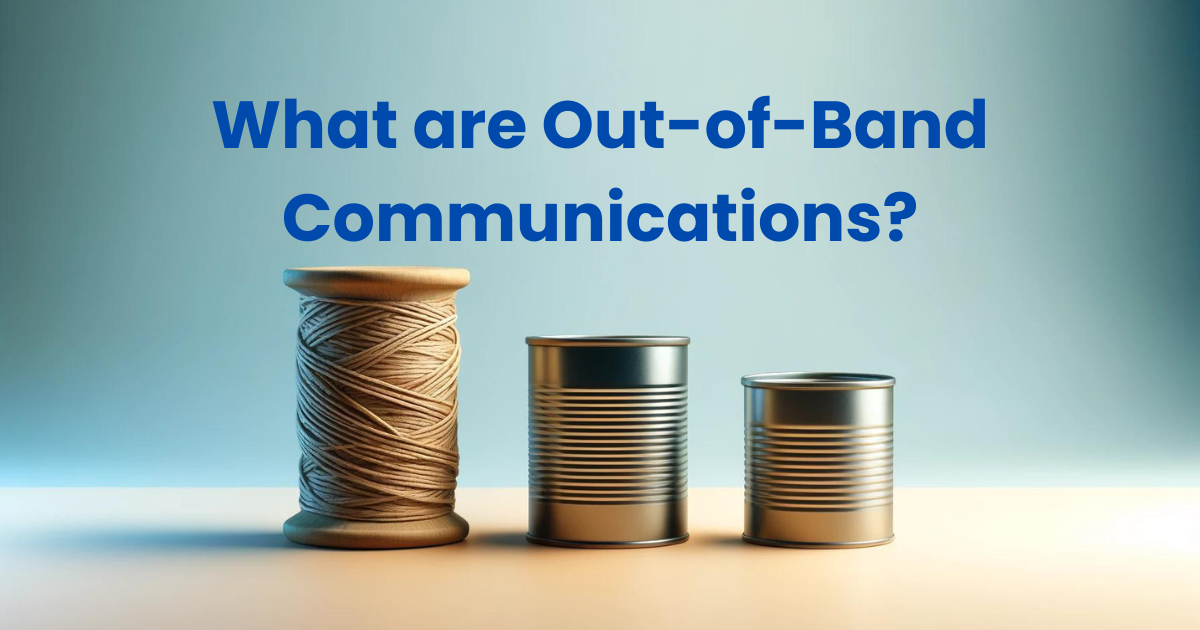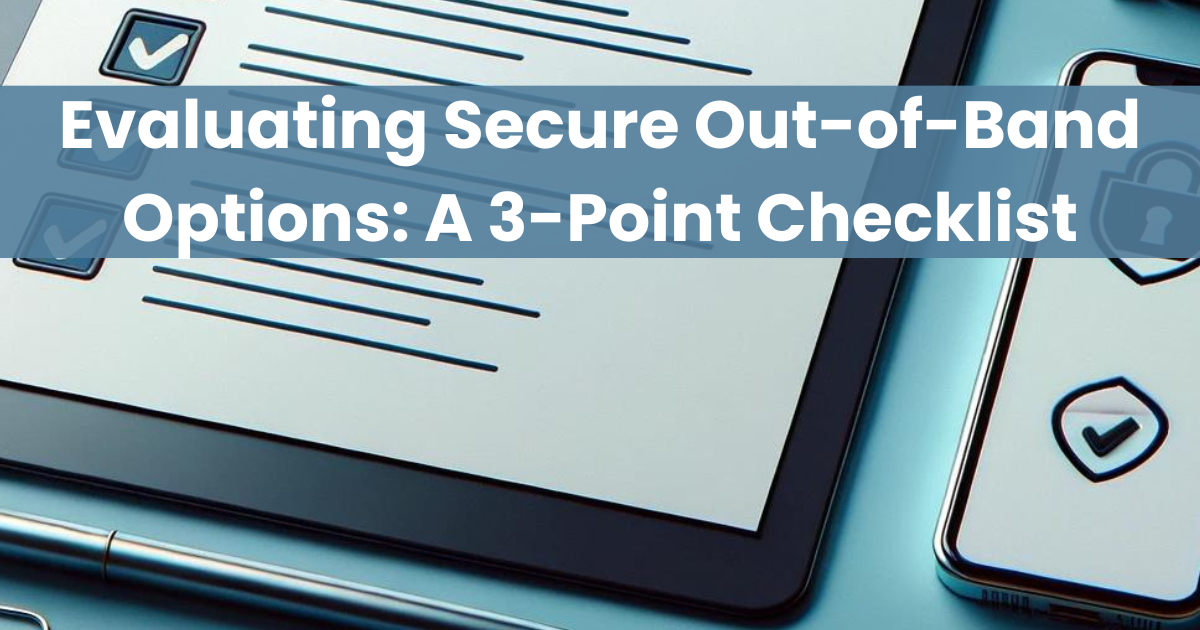While we’ve principally focused on the role of out-of-band communications and in particular the added value of purpose-built Secure Out of Band Collaboration™ during Incident Response as we shared in What are Out-of-Band Communications?, Out-of-Band Communications vs. Secure Out of Band Collaboration, and Understanding Secure Out-of-Band Collaboration in Incident Response, Secure Out of Band Collaboration™ has multiple use cases across the enterprise.
Secure Out of Band Collaboration™ (SOOB-C) is not just necessary during crises; it is a strategic asset across various enterprise functions, enabling secure and compliant communication that aligns with modern cybersecurity requirements. The vast array of enterprise use cases for SOOB-C can be divided into internal and external categories, each with communication security needs and governance requirements.
Adopting a ‘Left of Bang’ approach (i.e. before a cyberattack happens), ArmorText enables enterprises to be proactive in their defense strategy, ensuring secure communication channels are established and used before a threat is realized, which aligns with the strategic military concept of preemptive action.
ArmorText is akin to a ‘Classified’ tier for the private sector, enabling a Tier & Protect Strategy similar to that employed by government, defense, and national intelligence networks. SOOB-C allows companies to classify information based on sensitivity and risk, ensuring that only the most secure platform is used for critical communications like trade secrets, financial forecasts, and strategic plans. Less sensitive information can remain on standard communication channels.
ArmorText’s Tier & Protect strategy allows for a nuanced classification of communication based on content sensitivity, mirroring government protocols but tailored for the private sector. This ensures that information, depending on its strategic value and risk of exposure, is given the appropriate level of security and discretion.
Use cases for Secure Out of Band Collaboration™ can be broadly categorized as below:
Internal use cases
- Incident Response: SOOB-C is indispensable when an organization faces a cyber incident to ensure secure coordination without interference. Traditional communication channels can be compromised, and attackers can monitor response strategies and remediation efforts.
- Security Operations: Day-to-day operations are ripe targets for reconnaissance by threat actors. Proactively securing communications regarding network defenses and vulnerabilities is crucial for preventing breaches.
- Vulnerability Management: Discussions regarding patch management and known weaknesses must be protected from prying eyes that could exploit information before systems are secured.
- Internal Investigations: Investigations often deal with sensitive information that, if leaked, could have legal and reputational implications. SOOB-C ensures that such data is only available to authorized individuals, and when IT personnel are the subject of an investigation, it helps ensure they are not made aware and thus able to thwart the investigation or cover their tracks.
- Finance: Validation of high-value transactions requires confidentiality to prevent interception and fraud. SOOB-C enables out-of-band secure verification processes. SOOB-C also provides a safe space to discuss material non-public information that otherwise could be misused for insider trading.
- C-Suite and Senior Leadership Communications: High-level strategic discussions often involve market-moving or proprietary information. An out-of-band platform offers a safeguard against corporate espionage.
External use cases
- Threat Intelligence Sharing: When sharing intelligence with peers, security must be ironclad to prevent leaks that could tip off adversaries or jeopardize collective defense efforts.
- Mergers & Acquisitions: M&A communications are sensitive and can impact market dynamics. SOOB-C ensures negotiations and strategies are not exposed to unauthorized entities, and can help prevent deals from being preempted by successful corporate espionage.
- Managed Services: Communication with MSPs and MSSPs includes sensitive data about an organization’s infrastructure, requiring a secure channel like SOOB-C to prevent vulnerabilities. In the case of a coordinated attack or second order effect of an attack on one party, SOOB-C also provides a means of collaborating on joint remediation and response efforts.
- Supply Chain Communications: Secure communication is necessary to manage and protect the complex web of supplier and partner interactions from supply chain attacks.
- Board Communications: Board members discuss strategic directions and sensitive issues that, if disclosed, could impact stock prices and shareholder value. SOOB-C ensures these conversations remain confidential.
Executive awareness and budgeting for security
Reports such as Mimecast’s “The State of Email Security,” which also covered collaboration apps prove that executives across various sectors are acutely aware of the security challenges posed by under-secured collaboration mechanisms:
- 90% of executives acknowledge that collaboration tools are critical for their operations.
- However, 67% find it difficult to keep pace with the proliferation of these tools within their organizations.
- A concerning 55% have observed employees downloading and using unapproved tools, further expanding the attack surface.
- Collaboration app usage has surged by 82%, with 38% of executives noticing a corresponding rise in attacks.
- And, 75% see collaboration tools posing new threats and creating new security loopholes.
As a result, many executives will intuitively move more sensitive communications out-of-band to apps like Signal, iMessage, or WhatsApp. The fear is often that highly sensitive topics could inadvertently be seen by assistants or members of the information technology team.
It’s all about proactive protection that meets enterprise needs
Organizations have to balance security with compliance. Everyday tools like Slack or Teams may be compliant but are not secure enough for certain sensitive communications. Contrarily, while tools like Signal or WhatsApp offer more security, they lack the necessary governance and compliance capabilities.
All of the benefits of out-of-band communications and, more importantly, SOOB-C covered in What are Out-of-Band Communications? and Out-of-Band Communications vs. Secure Out of Band Collaboration all apply here, but to a broader array of day-to-day use cases.
According to reports like IBM Security’s “Cost of a Data Breach,” attackers often lurk undetected for 200+ days on corporate networks. Proactive secure communication practices can significantly mitigate risks before they escalate.
Inappropriate out-of-band apps can come with a price
Even without doing anything wrong, communicating via consumer privacy apps like the ones executives often turn to intuitively can lead to hefty fines.
By August 2023, more than $2.6 billion in fines were levied by the US Securities and Exchange Commission (SEC) and Commodity Futures Trading Commission (CFTC) against over 20 banks for a failure to meet business records retention requirements. This serves as a stark reminder of the regulatory and legal imperatives driving the need for a solution like ArmorText.
Even if the objective was simply to secure sensitive information, not a nefarious attempt to evade regulators, out-of-band communications not designed for enterprises have proven costly — regulatory fines, potential criminal charges, adverse inferences in court, and personal liabilities.
While augmenting security or compliance measures onto existing collaboration could help, this often comes with higher costs, greater user experience impacts, and new vulnerabilities. ArmorText’s specialized platform fills this gap, offering a secure environment for critical discussions without compromising user experience or enterprise governance.
The ArmorText difference
ArmorText stands apart by marrying security with compliance and governance. It combines user management, policy enforcement, and retention & review capabilities with end-to-end encryption as detailed in Why ArmorText’s User+Device Specific End-to-End Encryption Beats Other Options.
ArmorText works alongside an organization’s primary communication channels. This is particularly important for use cases such as internal investigations and finance, where introducing new systems can be met with resistance. Implementing ArmorText won’t disrupt existing processes or require significant overhauls in daily business operations. Where necessary, seamless integrations can be deployed to deliver workflow and operational insights into end-to-end encrypted channels.
Conclusion
The evolving threat landscape necessitates a robust Secure Out of Band Collaboration™ platform that can serve diverse and sensitive enterprise communication needs. ArmorText provides this and more, ensuring that the most crucial conversations remain protected, compliant, and under your control.
Evaluate your current communication tools for security and compliance gaps.
- Review ArmorText’s capabilities to see how it can enhance your organization’s communication security posture.
- Engage with our team to discover how ArmorText can be integrated into your existing workflows to fortify your defense against cyber threats.






